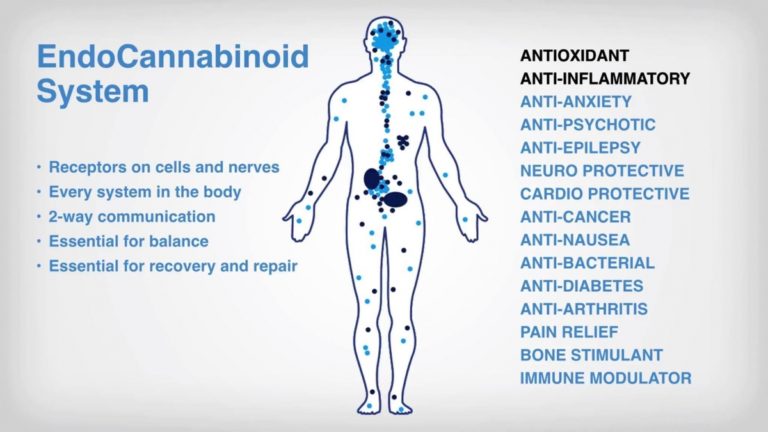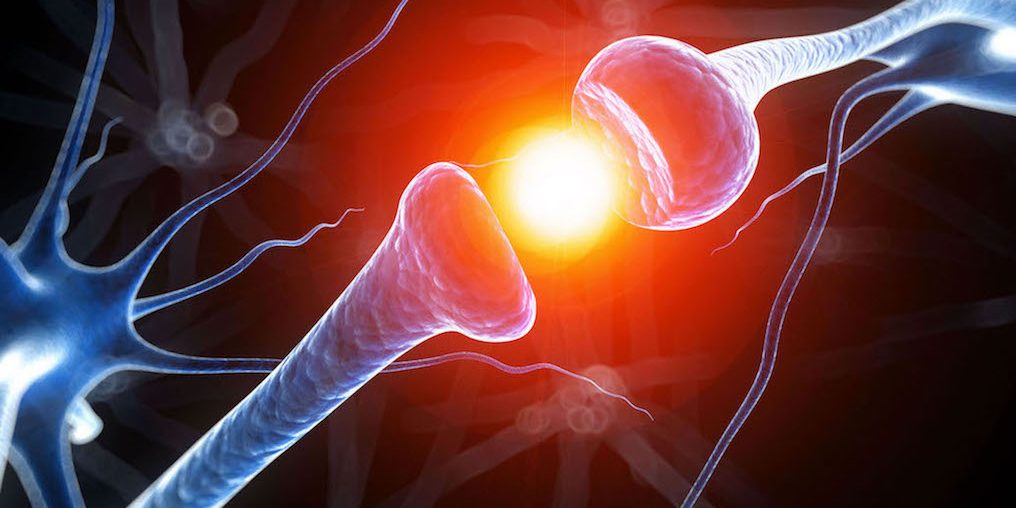Endocannabinoid Tone Describes the Current State of Your Endocannabinoid System (ECS)
Back in 2012 a well-published study on the alterations in endocannabinoid tone following chemotherapy shed light on a new way to look at Cannabinoid Medicine. Cisplatin, a platinum-derived chemotherapeutic agent, was found to cause a decreased level of endocannabinoid action in patients and this was found to be the reason so many suffer from Chemotherapy-induced Neuropathy. For the last decade, there’s been a great deal of education on exogenous cannabinoids and how they may help consumers and medical patients alike in treating many of life’s serious situations we face in caring for our health. Few, however, have gone down the road of ECS balance and Endocannabinoid Tone.
Within each of us is an intricate network of receptors that cannabis acts on to bring about its therapeutic effects. This network is called the endocannabinoid system (ECS), and it’s made up of many different components:
- Receptors: CB1 and CB2 are the most well studied, but there are also many others known as GPR’s and TRPV’s.
- Endocannabinoids: anandamide (AEA) and 2-arachidonoylglycerol (2AG), which are made by your body and attach to CB1 and CB2 receptors – but there are others that often remain unspoken of.
- Enzymes: FAAH and MAGL, just to name 2 of them – which break down AEA and 2AG
Your endocannabinoid tone is a reflection of how all of these components act together to bring about balance within your unique ECS – but it goes beyond that as our ECS modulates Homeostasis. This tone also encompasses the levels of endocannabinoids in your body, the rate at which they’re made and metabolized or broken down. ECS Tone also considers the density of receptors in your brain and beyond and whether or not they’re being properly fed. It’s a complex subject that’s still under investigation.
There’s so much to learn about the ECS and how it works but keep in mind that Scientists and all types of researchers are still uncovering answers that evolve by the day. One thing we know for sure is that endocannabinoids are stronger in efficacy and play a more vital role in treating our issues than exogenous or plant-based constituents. But, we also know that the two go hand in hand. Without the balance of exogenous cannabinoid intake quickly our endocannabinoid tone suffers – regardless of how much plant matter we ingest or inhale.

Knowing our ECS’s job is to maintain Homeostasis, or the overall balance of all bodily systems, gives us an advantage in learning how to keep that system operating at its reasonable levels.
Given that the ECS plays a role in many key life processes like appetite, sleep, mood, and memory, it’s not surprising that when your endocannabinoid tone becomes imbalanced, many issues can occur far beyond tolerance to THC, for example.
An underactive ECS is known as Clinical Endocannabinoid Deficiency Syndrome – this is yet another 15-year-old finding in science that has yet to be expanded on within western medicine. In a perfect world, we’d already have approved drugs to address this severe condition of imbalance and lack of endocannabinoid production that affects the Tone so bad that it’s the root cause of too many illnesses to list. Still, research has narrowed it down to a few.
It’s thought that if endocannabinoid tone is low, you’re more likely to have a lower pain threshold as well as problems with mood, sleep, and digestion. Some conditions that are associated with clinical endocannabinoid deficiency are:
- Migraines
- Fibromyalgia
- Irritable bowel syndrome
- Dysmenorrhea
- PTSD
- Bipolar disorder
But, it can go the other way as well – an overactive ECS is associated with conditions like:
- Obesity
- Diabetes
We’re finding that intake of minor cannabinoids and the major mother CBGa along with THC and other popular plant extracts is helping patients in a plethora of anecdotal cases. Maintaining balance is far more of an issue in the population than overproduction, but either can cause problems.
Lots of Things We Do Can Alter Endocannabinoid Tone
Although we still don’t fully understand the workings of the ECS, we do know that certain medicines, therapies, and lifestyle choices like exercise and diet can influence your Tone.
One big area of concern is pharmaceutical drugs – and oddly, they’re not all negative. While one can increase our endocannabinoid tone in a specific dose, the same pharmaceutical can decimate at higher milligrams. Like me, this brings many researchers to conclude that pharmaceutical drugs interfere drastically with our endocannabinoid system function.
Lifestyle choices like exercise and stress management can affect the ECS, too. High intensity exercise is one of the best ways to boost endocannabinoid levels – and create a better overall Tone.
But issues like Chronic stress or chronic pain tend to decrease our Tone as they cause our ECS to work in overdrive. Even alternative healing modalities like acupuncture and massage affect the endocannabinoid system positively – this is an area we’re still studying and examining.
Cannabis/Hemp use Influences Endocannabinoid Tone
The most obvious way to change your ECS is to use cannabinoids in various forms – but keep in mind that using only one cannabinoid without the lifestyle necessary to create a better Tone will generally decrease it and cause issues with balance.
CBD for instance has been known to prevent the breakdown of the enzyme FAAH, and THC can attach directly to CB1 receptors. These actions enhance endocannabinoid tone showing that both the Hemp Crowd and the THC cannabis crowd have something in common besides the love of a green and beautiful smelling plant. CBGa and CBG are newer to the marketplace and both are proving to be imperative in balancing the ECS.
We’ve grown to a place in Cannabis Science where we know that the system relies on so much more than a few droppers of oil or smoking a joint.
Cannabis can also be effective in helping people who have conditions that are associated with an overactive ECS. Quickly reading this, one sees that there’s much more to Tone and Balance than simply using more and more of a plant constituent. We must also consider why we’re using which cannabinoid and when.
We’re coming closer by the day to learn how to change endocannabinoid tone to our benefit. Most of the studies on this are preclinical. However, they do show that our everyday actions can impact our ECS.
Sign up to receive informative and exciting email updates from Mike's Medicines!
You can sign up for our mail list here:
Didn't find what you are looking for?
Find exactly what you want to when you want it.
Browse through our archives by date, category or by entering a topic in the provided search field.
Archives
Categories
More to come as we have time to add them – there’s 100’s of additional publications!



